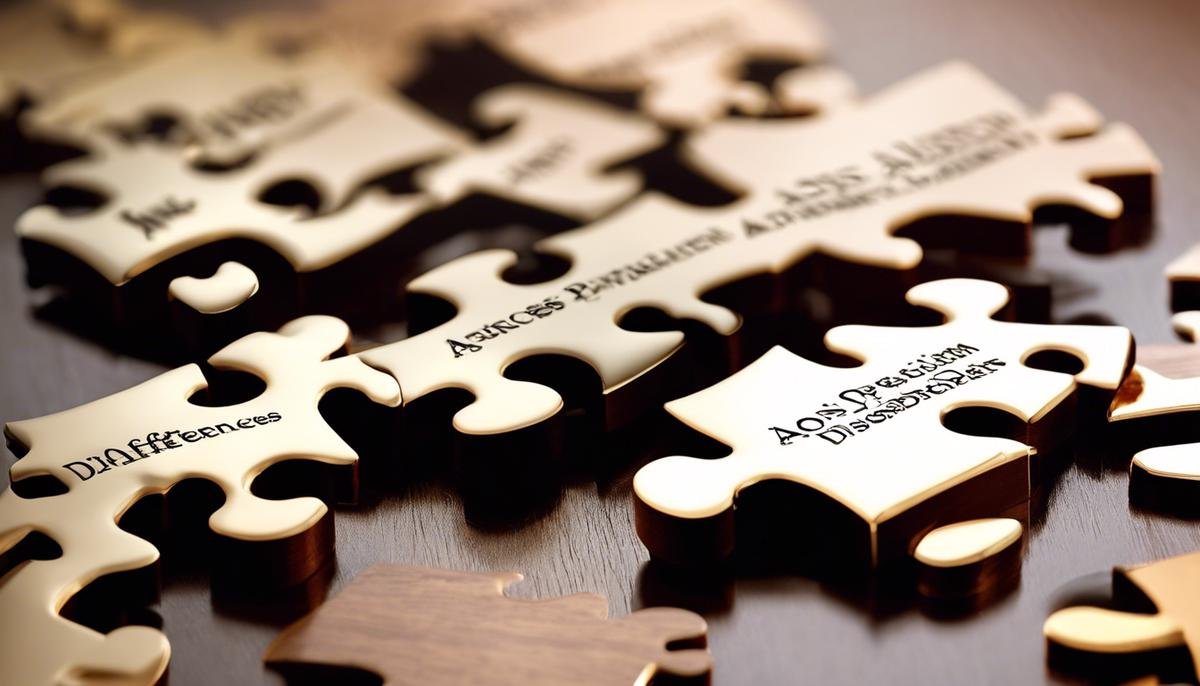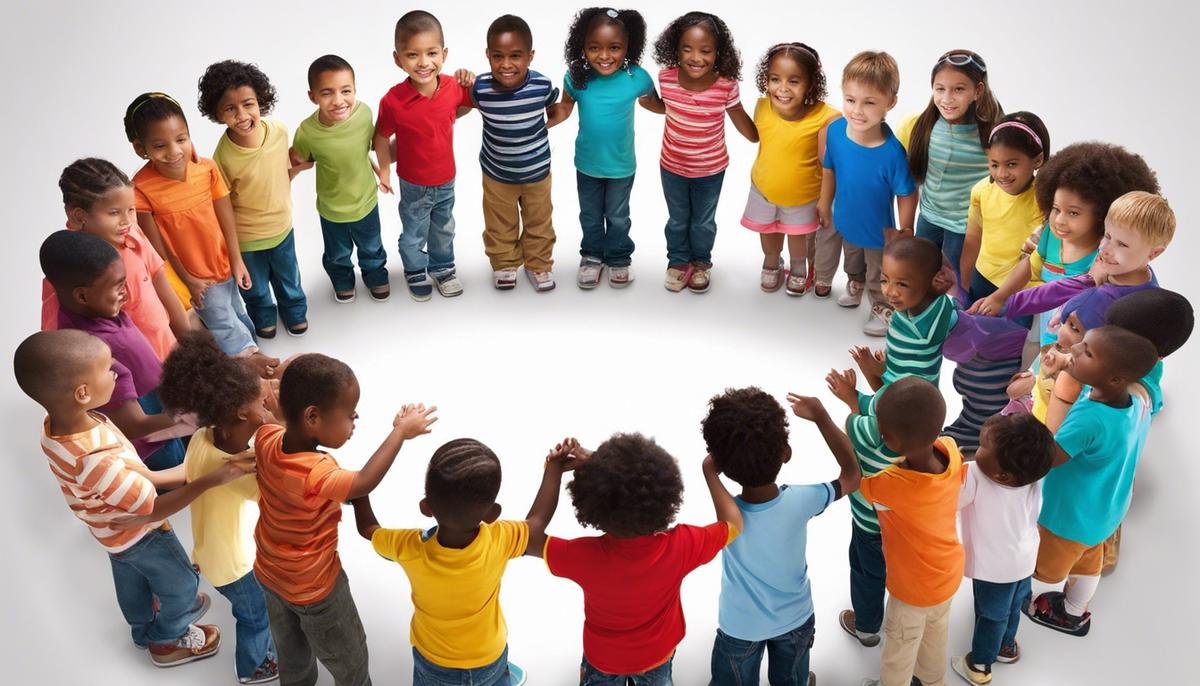
In the intricate mosaic of neurodiversity, understanding and properly diagnosing Autism Spectrum Disorders (ASDs), including Pervasive Developmental Disorder-Not Otherwise Specified (PDD-NOS), remains a paramount yet challenging task. This essay aims to shine a light on the subtle yet significant differences between PDD-NOS and other manifestations within the spectrum, such as classic autism and Asperger’s syndrome. Through a nuanced examination of these disorders, we endeavor to underscore the spectrum nature of ASD and the unique challenges that surface for families who must navigate the sometimes murky waters of diagnosis and understanding.
Differences Between PDD-NOS and Other Autism Spectrum Disorders
Understanding PDD-NOS: How It Stands Out in the Autism Spectrum
When it comes to the autism spectrum, it’s much like a tapestry – intricate and diverse, with each thread contributing to a broader picture. Among these unique threads is PDD-NOS, which stands for Pervasive Developmental Disorder-Not Otherwise Specified. It’s quite a mouthful, but stick around, and let’s unravel how PDD-NOS differs from other forms of autism, making it easier to understand and embrace the quirks and qualities of our little wonders.
Think of PDD-NOS as the member of the family who doesn’t quite follow the typical pattern but is still undeniably part of the clan. It’s a diagnosis often given when a child displays some, but not all, of the characteristics of autism or when the symptoms don’t quite match the criteria of other specific conditions within the spectrum, such as Asperger’s syndrome or classical autism.
What sets PDD-NOS apart is its flexibility in terms of symptoms and severity. The signs can be more subtle compared to other forms of autism, often leading to later diagnosis. Parents might notice that a child with PDD-NOS begins speaking on time but struggles with social interactions or vice versa. It can sometimes be like piecing together a puzzle without a clear picture to guide you.
Here’s where PDD-NOS diverges from other autism spectrum disorders:
- The Great Balancer: Unlike Asperger’s, children with PDD-NOS may have initial delays in language development, yet they might not exhibit the level of impairment seen in classical autism. It’s like walking a tightrope between expressive capabilities and social engagement.
- A Patchwork of Symptoms: There’s a wide range in the combination and severity of symptoms with PDD-NOS. This condition does not have a one-size-fits-all model – it’s more of a tailored experience, truly unique to each child. The child might have significant challenges in social situations while having no issues with language or cognitive skills, or they might exhibit the complete opposite.
- The Diagnosis Dilemma: Because of its less defining features, PDD-NOS often plays hide and seek with parents and professionals. It’s not as straightforward as other forms on the spectrum. This often means the journey to a diagnosis is a winding road, filled with more ‘maybes’ than ‘definites’.
- Flexibility in Developmental Growth: Children with PDD-NOS might show varying degrees of developmental growth. For instance, they might catch up in certain areas, such as language, only to face challenges in adaptive behaviors like flexibility and problem-solving a bit further down the road.
What’s essential to take heart in, is that children with PDD-NOS, like all children, thrive with the right blend of love, support, and intervention tailored to their unique needs. Early intervention remains key, as it shapes the framework for helping these children achieve their fullest potential.
Each child on the spectrum brings a unique intensity and perspective to the vibrant canvas of life. In homes and communities, recognizing the distinct differences, such as those within PDD-NOS, enriches understanding and fuels inclusion. Remember, whether it’s PDD-NOS or another form of autism, it’s not just about navigating a diagnosis – it’s about celebrating the individual journey of growth and discovery. So, embrace the adventure and know that support abounds amidst the vibrant tapestry of the autism community.

Challenges in Diagnosing Autism Spectrum Disorders
When it comes to autism spectrum disorders (ASD), misdiagnosis can occur for multiple reasons, all gardening concern among parents and medical professionals alike. The spectrum’s very nature means that no two individuals will present the same set of characteristics, and this is where the complexity begins.
Communication and Behavioral Overlaps
One of the reasons ASD often gets misdiagnosed is because symptoms can overlap with those of other disorders. Conditions such as ADHD, anxiety, and even language disorders share similar traits with autism, such as difficulty with social interactions or communication. Without a comprehensive evaluation considering the full range of behaviors and developmental history, a child may be incorrectly labeled with a disorder that has somewhat parallel characteristics.
Professional Awareness and Training
The proficiency and training of healthcare professionals play a critical role. A misdiagnosis can occur if a clinician lacks specific training in ASD or is unfamiliar with the full spectrum and its presentations. Clinicians must stay abreast of the latest diagnostic criteria and keep an open mind when facing behaviors that seem atypical or do not neatly fit into the box of more familiar disorders.
Gender Bias
Gender bias is another factor that may lead to misdiagnosis. Historically, boys have been more frequently diagnosed with autism than girls, but this does not necessarily mean that it occurs less frequently in girls. Recent studies suggest that girls may display symptoms differently, often internalizing behaviors or mastering the art of social camouflage, which can lead to underdiagnosis or misdiagnosis with other conditions.
Cultural and Socioeconomic Factors
Cultural and socioeconomic factors also come into play. It’s not unheard of for cultural differences in behavior and communication to be mistaken for developmental disorders. Moreover, access to knowledgeable healthcare providers may vary based on location and socioeconomic status, leading to disparities in diagnosis.
Age-Related Challenges
Lastly, age-related variability in presentation can be a hurdle. Young children may not exhibit the full range of characteristics until they are older, or they may develop coping strategies that mask some symptoms. Therefore, it is possible for someone to reach adolescence or adulthood before being correctly diagnosed with ASD.
Awareness of these pitfalls is a step towards better, more accurate diagnoses, which is essential because the correct diagnosis is the gateway to appropriate support and services. In the realm of ASD, where the right support can make a world of difference in a child’s development and quality of life, striving for greater accuracy and understanding in diagnosis isn’t just a professional responsibility — it’s a community obligation rooted in compassion and a desire for every individual to thrive.
Remember, autism is a part of the beautiful tapestry of human diversity. While misdiagnosis can be challenging, ongoing education and advocacy work wonders in ensuring that each child on the spectrum is understood, supported, and celebrated.

The Impact of a PDD-NOS or Autism Misdiagnosis
When a child receives a misdiagnosis, particularly when it comes to the complex landscape of autism spectrum disorders, the consequences can ripple through the entire family in a multitude of ways. Understanding these potential impacts fortifies us with the knowledge needed to advocate more effectively for our loved ones.
First and foremost, an incorrect diagnosis can mean missed opportunities for specialized therapies tailored to support a child’s specific needs. Therapeutic interventions, such as speech therapy, occupational therapy, or behavioral interventions, depend heavily on pinpointing the challenges a child faces. With a misdiagnosis, a child may spend months or even years receiving less effective treatments, potentially leading to slower progress in areas crucial for their long-term development.
For the family as a whole, a misdiagnosis can bring about a deep sense of confusion and frustration. Parents often feel an urgency to provide the best care for their child but may find themselves embroiled in a quagmire of uncertainty when therapies do not yield expected results. This scenario can drain emotional resources and may lead to tension within family dynamics as each member grapples with unmet expectations and seeking answers for their loved one.
The financial implications of a misdiagnosis should not be understated. Many families invest considerable resources into health care, education, and supportive services. When these funds channel toward inappropriate therapies, it’s not just the potential for progress that’s lost; it’s also a matter of tangible resources that could have been allocated more effectively.
Education systems and accommodations rely on accurate diagnoses to provide appropriate support. An incorrect label may either lead to insufficient assistance or inappropriate educational strategies, potentially hampering a child’s ability to thrive academically and socially. As such, ensuring the educational setup aligns with a child’s genuine needs is critical to nurturing their potential.
Moreover, there’s a psychological toll to consider. Both children and parents may suffer from decreased self-esteem when faced with a misdiagnosis. If a child is continually met with expectations they cannot meet due to an incorrect understanding of their capabilities, their sense of self-worth may be impacted. Parents, on the other hand, may doubt their parenting skills or decisions, unwittingly adding to the emotional burden the family carries.
In the broader scope, misdiagnosis can also compound stigma. When behaviors and needs are not accurately associated with the correct condition, it perpetuates misconceptions about developmental disorders. This not only affects the child in question but resonates through the community, influencing how society perceives and accommodates all individuals on the autism spectrum.
Taking all this to heart, families, educators, and healthcare professionals alike must push for comprehensive evaluations and remain vigilant for signs that a diagnosis may not be a complete reflection of a child’s circumstance. A strong support network is vital, as is openness to re-evaluation and adjustment of strategies when it comes to promoting the health, happiness, and potential of every child.
At the end of the day, championing for precise and empathetic diagnoses isn’t just about ticking boxes; it’s about safeguarding the well-being and future of our children, ensuring they have the nurturing soil to grow, bloom, and contribute their unique beauty to the diverse garden of humanity.

The journey through the complex terrain of ASDs is both personal and pervasive, affecting not only the individuals diagnosed but also their support networks. Accurate diagnosis is the compass that guides this journey, crucial for charting the proper course in therapy, education, and social adaptation. By unearthing the ramifications of misdiagnosis and celebrating the nuances of conditions like PDD-NOS, we empower those touched by the spectrum to embrace the full breadth of their experiences and potential. Ultimately, our dedication to precision in diagnosis paves the way for responsive, compassionate support, enabling all involved to flourish in the rich tapestry of human diversity.




